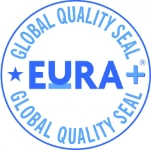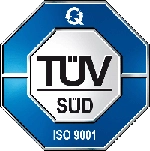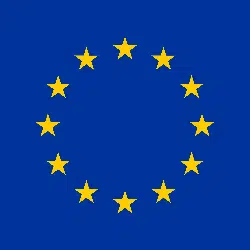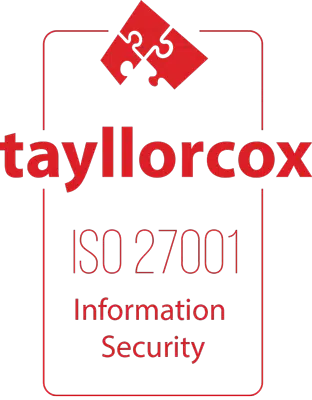When is it possible to claim a VAT refund?
La norma che viene in considerazione in caso di insorgenza di un credito IVA è l’art. 30 del DPR 633/1972, ai sensi del quale, a fronte di un credito superiore ad euro 2.582,28, il contribuente ha diritto di computare in detrazione l’importo in questione nell’anno successivo, ovvero di richiederne il rimborso, nei casi tassativamente previsti nei commi successivi dello stesso art. 30, e in particolare:
- quando esercita esclusivamente o prevalentemente attività che comportano l’effettuazione di operazioni soggette ad imposta con aliquote inferiori a quelle dell’imposta relativa agli acquisti e alle importazioni, computando a tal fine anche le operazioni effettuate a norma dell’articolo 17, quinto, sesto e settimo comma;
- where he carries out non-taxable transactions as referred to in Articles 8, 8-bis and 9 in an amount exceeding 25 per cent of the total amount of all transactions carried out;
- limited to the tax relating to the purchase or importation of amortizable goods and goods and services for studies and research activities;
- when he mainly carries out transactions not subject to tax pursuant to Articles 7 to 7-septies;
- where he falls within the conditions under the third paragraph of Article 17.
VAT Refund for amortizable goods: what’s new
With particular reference to Article 30 (2) (c), the taxpayer can file a refund request for the deductible excess “limited to the tax relating to the purchase or importation of amortizable assets, as well as goods and services for studies and research activities”.
Following various requests for clarifications received by the Revenue Agency, Resolution No. 20/E of 26 March 2025 delivered a ruling on the refundability of the deductible VAT excess “for works carried out on third-party assets”, and in particular for renovation or maintenance works, contradicting the practice orientation as outlined (and followed up to that time) in Resolution No. 179/E/2005.
Sulla base di tale orientamento, infatti, non poteva riconoscersi il diritto al rimborso dell’IVA con riferimento a spese effettuate per “il miglioramento, trasformazione od ampliamento di beni di terzi concessi in uso o comodato, qualora si estrinsec[assero] in opere non suscettibili di autonoma utilizzabilità, non [fossero] iscrivibili tra le immobilizzazioni materiali, non potendo le opere realizzate essere rimosse al termine del periodo di utilizzo” e non potendo, da un punto di vista fiscale, essere queste ultime considerate quali “beni” (della specie immateriali).
The principle of law enunciated by the Italian Supreme Court (Judgment No. 13162/2024)
The new interpretation, indeed, found its roots from the fundamental Judgment No. 13162/2024 of the Italian Supreme Court on VAT, which, analysing the thorny issue concerning the possibility of a taxable person to benefit from the right to reimbursement of VAT paid for the execution of works on third-party goods in his possession, affirmed the principle of law whereby “An entrepreneur or a self-employed person is entitled to a VAT refund for renovation or maintenance works on property of which he is not the owner but which he holds by virtue of a personal right of enjoyment, provided that there is an instrumental link between that property and the activity carried out”.
More specifically, in the case examined by the Court, the appellant Revenue Agency complained of a violation of law in relation to the implicit equivalence of the conditions for the deduction and reimbursement of VAT – upstream, the necessary judgement on the possibility of bringing the taxable person’s assets within the scope of applicability of Article 30(2)(c) of Presidential Decree No. 633/1972, and, therefore, within the concept of “amortizable goods” (within the meaning of Articles 102 and 103 of Presidential Decree No. 917/1986), not only instrumental assets to the exercise of the business activity, but also those of which the taxpayer has possession by virtue of the right of ownership or other right in rem.
With regard to the core hermeneutic question, relating to the aforesaid equivalence, with specific reference to taxable transactions but relating to goods owned by a third party with respect to the tax liability, the regulatory framework is delineated by the European legislation, and in particular Article 183 of Directive 2006/112/EC and the Italian legislation (Article 30 of Presidential Decree No. 633/1972).
Pursuant to that provision, “where, for a tax period, the amount of deductions exceeds the amount of VAT due, the Member States may have the excess carried forward to the following period, or make a refund in accordance with rules which they shall determine”.
Until the question was referred – in view of the fundamental nomofilactic function performed by the Supreme Court – there were two opposing orientations:
- un primo orientamento (maggioritario) che affermava l’equivalenza di presupposti tra il diritto al rimborso e il diritto alla detrazione, con l’unica condizione della strumentalità all’esercizio dell’attività d’impresa dei beni interessati;
- un secondo indirizzo, più restrittivo, per il quale invece tale equivalenza va andava negata.
In view of the provisions of the aforesaid Article 183, the question that has arisen is whether or not the national legislator, according to the EU rule, has the discretion to differentiate the treatment of the two institutions in substantive or merely procedural terms.
In the Supreme Court’s view, the rules must be interpreted in accordance with the prevalent opinion of the Tax Chamber, which supports the equivalence of the conditions for deduction and reimbursement, precisely on the basis of the literal interpretation of the directive.
Moreover, according to the case law of the Court of Justice, domestic legislation must adhere to precise cornerstones, among which the principle of tax neutrality should be taken into account in settling disputes.
This principle, in the light of this guideline, assigns a “tendentially absolute” value to this EU principle in the sense that, in any event, “the taxable person cannot be affected in the same way as a final consumer”.
The new interpretation of “amortizable goods”
In cases of harmonised taxes (i.e. subject to EU rules), there is a mandatory hermeneutic avenue deferential to the primacy of EU law – therefore, in order to comply the national case law with the principles of the European one, there is a necessary need for a broader interpretation of the domestic rule. More specifically, the literal interpretation must be broadened by stipulating that “acquisition” must mean the availability of the asset by virtue of a legal title that guarantees its possession or holding, and “amortizable” must mean its durability or long-term usefulness (the reference here is to an “appreciably long” period of time, i.e., it may also be a lease or gratuitous loan).
The implementation of the principle in Resolution No. 20/E/2025
With Resolution No. 20/E/2025 the Revenue Agency has implemented the new jurisprudential orientation of the Italian Supreme Court, adapting the practice to the new concept of amortizable assets – which also include works carried out on third parties’ assets with reference, for example, to leased or gratuitous loaned property – as well as to the equivalence of the conditions between the VAT deduction and refund institutes.



















